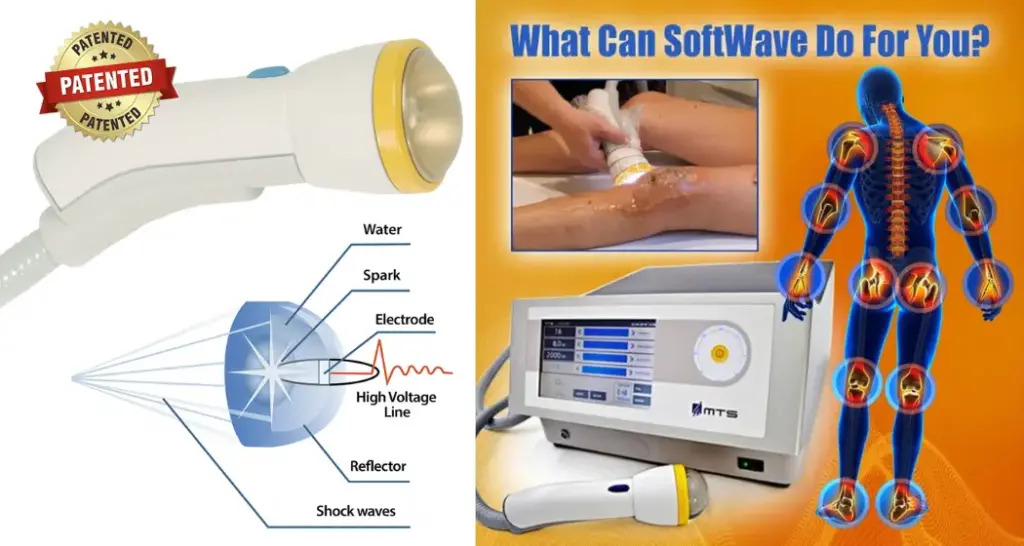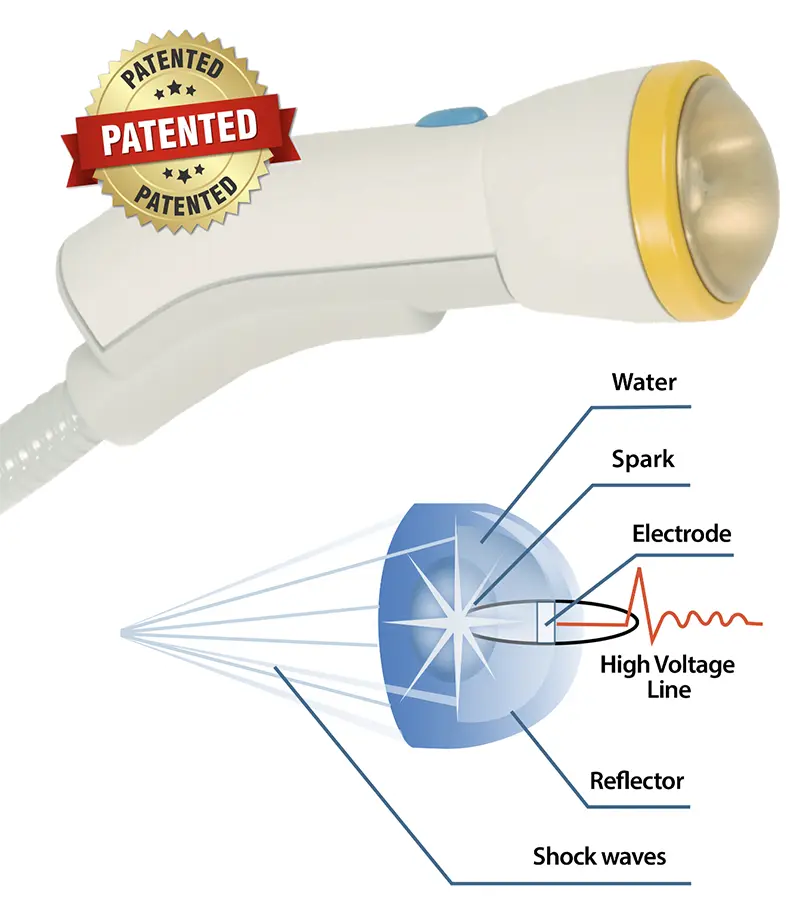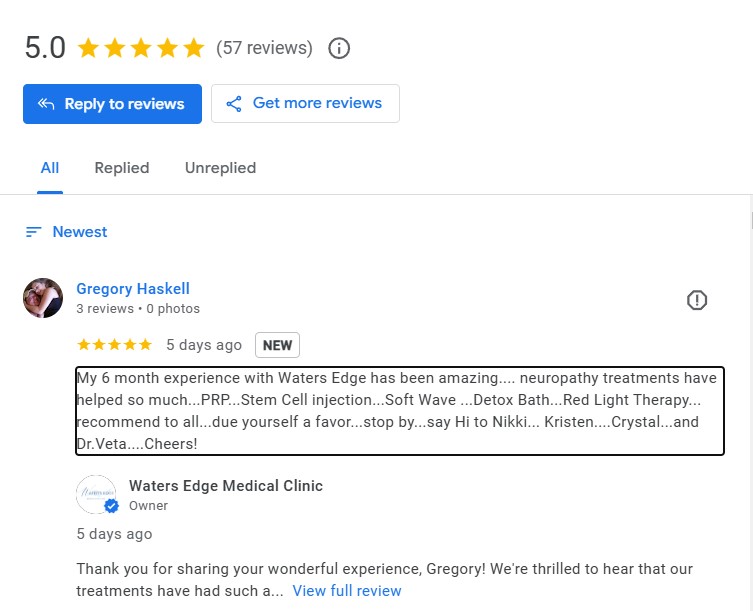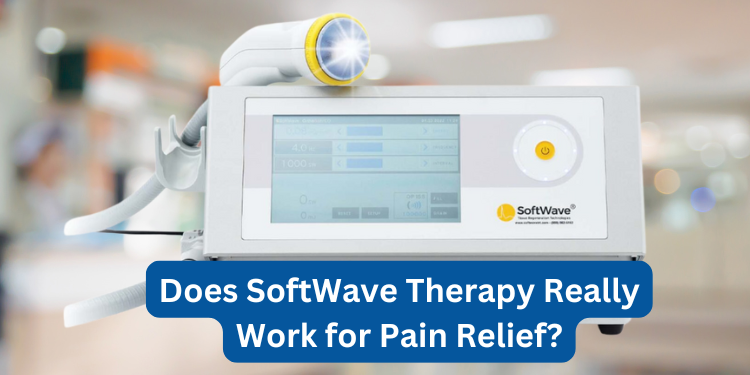SoftWave Therapy is making waves as a new way to tackle pain without going under the knife or relying on medication. This innovative, non-invasive treatment uses sound waves to promote healing. But does SoftWave Therapy really work? That’s the big question. In this article, we’ll dive into the science, hear from real patients who’ve experienced it firsthand, and see what medical experts have to say about its effectiveness.
Key Takeaways
- SoftWave Therapy uses sound waves to boost healing and cut down pain.
- Many folks feel better after just a few sessions, no surgery needed.
- It’s a good option for those who want to avoid meds and lengthy recovery.
- Studies show it’s effective for chronic pain and helps with mobility.
- SoftWave might not be for everyone, but it’s worth checking out if you’re in pain.
How SoftWave Therapy Targets Pain and Accelerates Healing
SoftWave Therapy is a cutting-edge approach that addresses pain and speeds up healing by using sound waves to stimulate the body’s natural processes. This therapy, also known as Extracorporeal Shock Wave Therapy (ESWT), delivers high-energy, unfocused sound waves to injured or painful areas. These waves create a small disturbance in the tissue, which triggers the body’s healing response.
The key mechanism of SoftWave Therapy is its ability to enhance blood flow and activate stem cells. By improving circulation, it supplies the affected area with essential nutrients and oxygen, crucial for tissue repair. The activation of stem cells is particularly important as these cells are responsible for regenerating damaged tissues.
The therapy is known for its effectiveness in treating various conditions, including chronic pain, joint issues, and overuse injuries. It’s especially popular for those who haven’t found relief through traditional treatments. Here are some of the benefits of SoftWave Therapy:
- Non-invasive treatment with no need for anesthesia or recovery time.
- Quick sessions, typically lasting 10-15 minutes.
- Long-lasting pain relief, often noticeable after just one or two treatments.
SoftWave Therapy offers a promising alternative for pain management, providing a path to recovery without the need for surgery or medication. It’s a game-changer for those looking to regain their quality of life.
While SoftWave Therapy is effective for many, before starting treatment, it’s important to speak with a healthcare professional to assess if it suits your individual needs. As with any treatment, individual results may vary, and a professional can help guide you through the process.
The Science Behind SoftWave Therapy for Pain Relief
SoftWave Therapy is an innovative approach to managing pain, leveraging the power of high-frequency sound waves. Rooted in the science of Extracorporeal Shock Wave Therapy (ESWT), this non-invasive treatment was a trusted method in European medicine before becoming popular in the United States. What makes SoftWave Therapy particularly compelling is its ability to stimulate the body’s natural healing processes without the need for drugs or surgery.

The therapy works by delivering unfocused, high-energy sound waves to areas experiencing pain or injury. These sound waves create a microtrauma in the affected tissues, which might sound counterintuitive, but it’s this very process that kickstarts the body’s healing response. Here’s how it unfolds:
- Enhanced Blood Flow: The sound waves improve circulation in the targeted area, by boosting circulation, this therapy provides tissues with the vital oxygen and nutrients required for recovery and regeneration.
- Inflammation Modulation: By reducing inflammation, SoftWave Therapy helps in alleviating pain and accelerating recovery.
- Stem Cell Activation: The therapy activates resident stem cells, crucial for regenerating damaged tissues and promoting long-term healing.
This approach not only addresses the symptoms but also tackles the root cause of pain, making it effective for conditions like tendinitis, muscle pain, and joint disorders.
In essence, SoftWave Therapy offers a holistic pathway to pain relief, capitalizing on the body’s innate healing capabilities. It’s a promising alternative for those seeking relief without the complications of invasive treatments.
For those interested in exploring this therapy, it’s important to consider the specific conditions it can treat and how it fits into your overall pain management strategy. Softwave Therapy is particularly noted for its effectiveness in reducing inflammation and stimulating recovery processes, presenting a compelling case for its use in chronic pain scenarios.
What Clinical Studies Say About SoftWave Therapy’s Effectiveness
When it comes to evaluating medical treatments, clinical studies often hold the key to understanding their true impact. Does SoftWave Therapy Actually Deliver Results? Well, let’s dive into what the research says.
SoftWave Therapy, known for its non-invasive approach, this therapy has been widely studied for its role in accelerating healing and reducing pain. These studies frequently highlight its ability to reduce pain significantly and improve mobility. For many patients, this therapy offers a viable alternative to more traditional treatments like surgery or medication.

Key Findings from Clinical Research
- Pain Reduction: A large majority of patients report noticeable decreases in pain levels after undergoing SoftWave Therapy. In fact, studies show a 65-91% improvement in musculoskeletal and general pain complaints.
- Mobility Improvement: Not only does it alleviate pain, but it also enhances mobility, allowing patients to resume daily activities with greater ease.
- High Satisfaction Rates: Patients and medical specialists alike report high satisfaction rates, patients report a 90% satisfaction rate, while the treatment maintains a 94% quality approval rating, reflecting its success.
Additional Benefits
- Non-Invasive and Drug-Free: SoftWave Therapy is FDA-cleared, ensuring it meets safety standards without the need for drugs or invasive procedures.
- Broad Application: It’s effective across a variety of conditions, including chronic pain and degenerative diseases.
For those skeptical about “Is SoftWave Therapy Effective,” clinical evidence suggests it’s a promising option for those seeking pain relief without surgery. The therapy’s ability to stimulate natural healing processes makes it a standout choice for many.
Considerations and Limitations
While SoftWave Therapy shows great promise, it’s not a one-size-fits-all solution. Effectiveness may vary depending on individual conditions, and with some requiring supplementary or alternative treatments such as StemWave Therapy. for deeper tissue issues. Always consult with a healthcare provider to determine the best approach for your specific needs.
In conclusion, SoftWave Therapy stands out as a compelling option for pain management, backed by substantial clinical research. Its ability to provide non-invasive, effective relief makes it an essential solution for managing chronic pain.
Top Benefits of SoftWave Therapy for Chronic Pain Management
SoftWave Therapy is gaining traction among those seeking relief from chronic pain. Its non-invasive nature, combined with its wide-ranging benefits, makes it a compelling solution for various conditions. Here’s a closer look at what makes SoftWave Therapy stand out:

- Non-Invasive Treatment: One of the biggest draws of SoftWave Therapy is that it doesn’t require surgery or needles. For those wary of invasive procedures, this is a huge plus.
- Minimal Side Effects: Unlike some treatments that can lead to bruising or swelling, SoftWave Therapy generally only causes slight redness or soreness, which fades quickly.
- Quick Sessions: This quick 10-15 minute therapy session allows for effective treatment without disrupting your daily schedule.
- Long-Lasting Relief: While some pain relief methods only offer temporary respite, SoftWave Therapy can lead to lasting improvements, especially with a series of treatments.
- Enhanced Mobility: Many patients find that their range of motion improves, allowing them to return to daily activities with less discomfort.
SoftWave Therapy is a promising option for those looking to manage chronic pain without the hassle of lengthy recovery times or significant side effects. It’s a straightforward, effective approach that can make a real difference in quality of life.
Is SoftWave Therapy Right for Your Pain? Key Insights
Deciding whether SoftWave Therapy is the right fit for your pain management needs involves considering several factors, including the type of pain you experience and your overall health goals. Here are some insights to help guide your decision:

Understanding Your Pain
Before considering SoftWave Therapy, it’s essential to identify the nature of your pain. SoftWave is particularly effective for chronic conditions like arthritis, tendonitis, and plantar fasciitis. If your pain stems from these or similar issues, SoftWave could be a viable option.
Weighing the Benefits
SoftWave Therapy offers numerous benefits, including:
- Non-Invasive Treatment: Unlike surgery, SoftWave requires no incisions or anesthesia.
- Minimal Side Effects: Most patients experience only slight redness or soreness post-treatment.
- Quick Recovery: You can resume normal activities almost immediately after a session.
Considering Limitations
While SoftWave Therapy is effective for many, it may not be suitable for everyone. Those with severe or deep tissue injuries might need alternative treatments like StemWave Therapy, which offers deeper penetration.
SoftWave Therapy could be a game-changer for those seeking a non-invasive approach to pain relief. To ensure safety and effectiveness, discuss your condition with a healthcare provider before beginning treatment.
If you’re exploring options for pain management, SoftWave Therapy presents a promising, non-invasive alternative worth considering. Evaluate your condition, consult with professionals, and weigh the benefits against potential limitations to make an informed decision.
Are you tired of living with pain? Discover how SoftWave Therapy can help you find relief from joint pain and neuropathy. Learn more about this innovative treatment and claim your special offer today!
Conclusion
So, does SoftWave Therapy really work for pain relief? Well, it seems like it does for a lot of folks. It’s a non-invasive option that many people have turned to when other treatments didn’t quite cut it. The therapy uses sound waves to help the body heal itself, which sounds pretty cool, right?
People have reported feeling better after just a few sessions, and it doesn’t require any downtime, which is a big plus. But like anything, it might not be the magic bullet for everyone. Some might find more relief with other treatments, like StemWave, especially for deeper injuries. If you’re thinking about giving it a shot, it’s probably a good idea to chat with a healthcare provider to see if it’s the right fit for you. At the end of the day, it’s all about finding what works best for your body.
Frequently Asked Questions
What exactly is SoftWave Therapy?
SoftWave Therapy is a treatment that uses sound waves to help heal the body and reduce pain. It’s non-invasive, which means it doesn’t involve surgery or needles.
How does SoftWave Therapy help with pain?
The therapy sends sound waves into the body, enhancing circulation, reducing inflammation,, which helps to ease pain and speed up healing.
Is SoftWave Therapy safe to use?
Yes, SoftWave Therapy is considered safe and is cleared by the FDA. Most people don’t have any serious side effects, just maybe a little redness or soreness.
What should I expect when receiving SoftWave Therapy?
During a session, a gel is applied to the skin, and a device sends sound waves into the area that needs treatment. Sessions last about 10-15 minutes and are usually painless.
How many SoftWave sessions are usually needed?
Most people need between 3 to 5 sessions, though the exact number depends on the severity of their condition.
Can SoftWave Therapy treat all kinds of pain?
SoftWave Therapy is used for many types of pain, like joint pain, back pain, and injuries. It’s best to talk to a doctor to see if it’s right for your specific pain.
If you have any additional questions or if you are interested to see if Softwave therapy is right for you, pleas contact us at Waters Edge Medical Clinic 727-550-0855. Currently we are offering an introductory pain relief session for $49. Click on the link to schedule.


